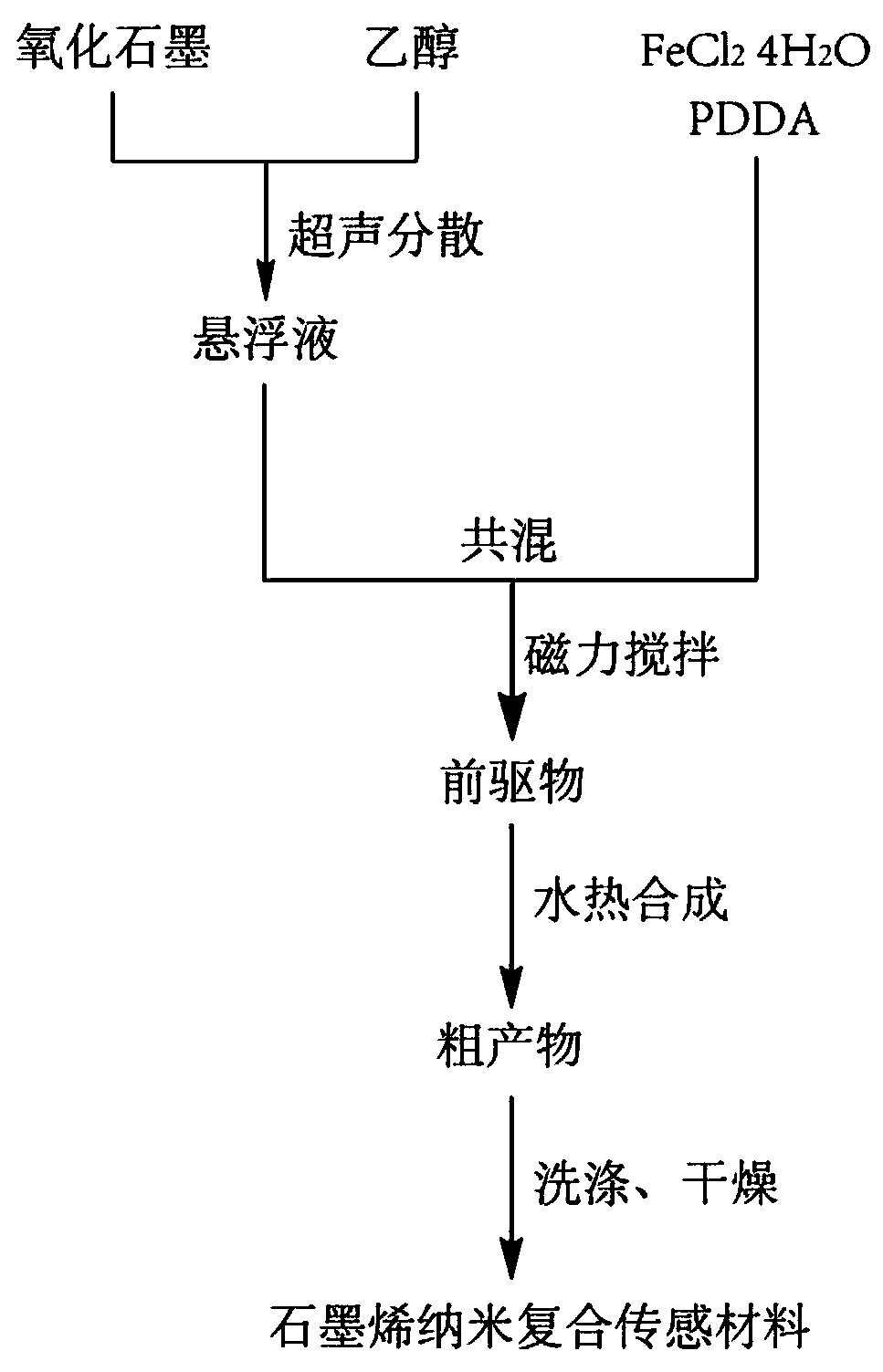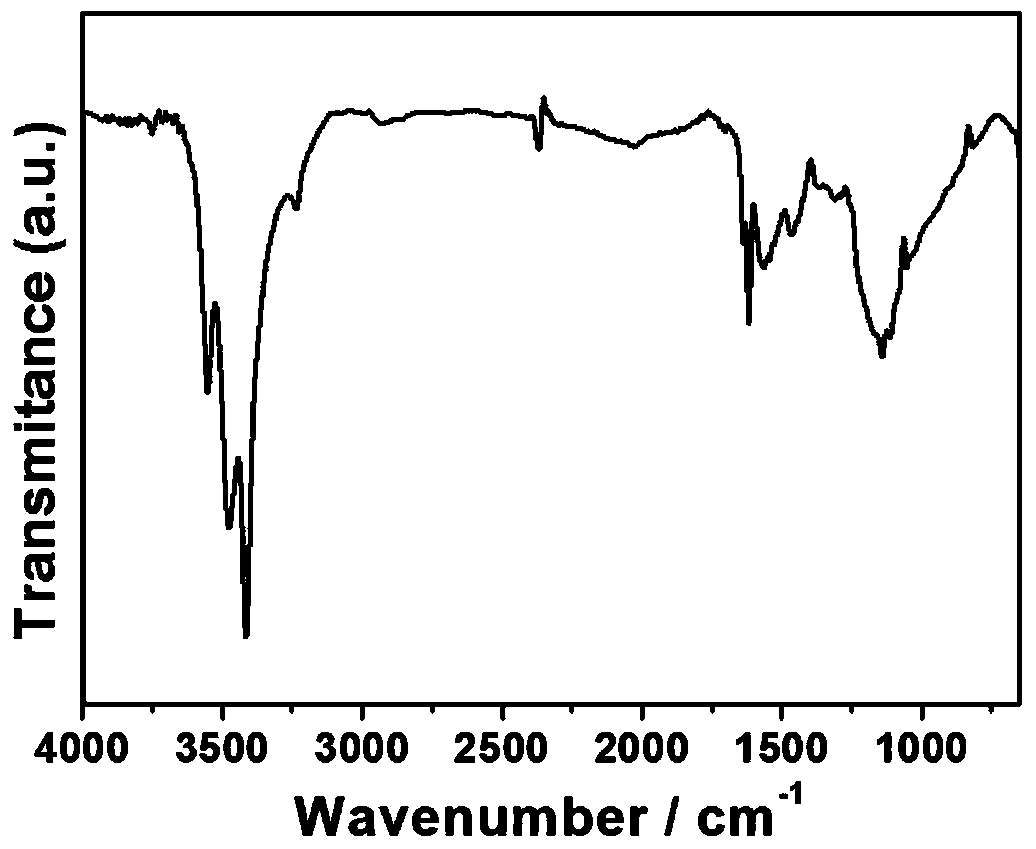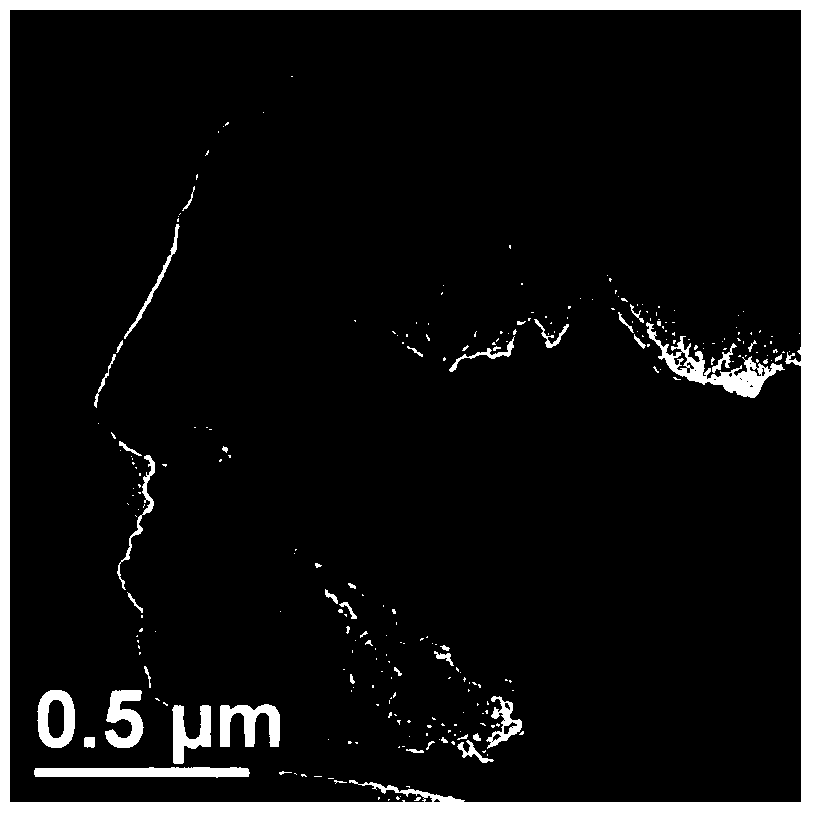Fe coated with polydiallyldimethylammonium chloride 1.833 (oh) 0.5 o 2.5 Nitrogen-doped graphene nanocomposite sensing material and preparation method thereof
A technology of polydiallyldimethylammonium chloride and nitrogen-doped graphene, applied in the direction of material electrochemical variables, etc., can solve the problems of large three wastes, cumbersome and complicated operations, and achieve improved dispersion performance and simple process , easy-to-control effects
- Summary
- Abstract
- Description
- Claims
- Application Information
AI Technical Summary
Problems solved by technology
Method used
Image
Examples
preparation example Construction
[0030] Such as figure 1 As shown, a polydiallyldimethylammonium chloride (PDDA)-coated Fe 1.833 (OH) 0.5 o 2.5 A nitrogen-doped graphene (NG) nanocomposite sensing material and a preparation method thereof, the method comprising the following steps:
[0031] Step 1, adopt the improved Hummers method to prepare graphite oxide solid with natural graphite powder;
[0032] Step 2. Under ultrasonication, prepare an ethanol suspension of graphene oxide, the ratio of graphite oxide to ethanol solvent is 1 ~ 0.2 mg / ml; ultrasonic time is 5 ~ 24 h;
[0033] Step 3, add PDDA to the suspension in step 2 and stir evenly, the ratio of graphite oxide and PDDA is 1:1 ~ 1:10 mg / μl; add FeCl 2 4H 2 O into the suspension and stir well, graphite oxide and FeCl 2 4H 2 The mass ratio of O is 1: 3~2: 1 mg / mg;
[0034] Step 4, mix the mixture of step 3 with NH 3 ·H 2 After O is mixed, it is quickly loaded into a hydrothermal reactor and heated for reaction; graphite oxide and NH 3 ·H 2 T...
Embodiment 1
[0037] The first step, the preparation of graphite oxide solid;
[0038] At 80°C, 20 g of natural graphite was preoxidized with 30 ml of concentrated sulfuric acid, 10 g of potassium persulfate and 10 g of phosphorus pentoxide, washed with water to pH = 7, and dried overnight at room temperature for use;
[0039] Cool 460 ml of concentrated sulfuric acid to about 0 °C, then add 20 g of pre-oxidized graphite into it, slowly add 60 g of potassium permanganate, so that the temperature of the system does not exceed 20 °C, after the addition is completed, heat up to 35 °C, and stir After 2 hours, slowly add 920 ml of deionized water in batches so that the temperature of the system does not exceed 98 °C. After stirring for another 15 minutes, add 2.8 L of deionized water and 50 ml of 30% hydrogen peroxide. The resulting bright yellow suspension was filtered under reduced pressure and washed. Until there is no sulfate ion in the filtrate, and when it is neutral, the product is dried i...
Embodiment 2
[0048] The first step is the same as Step 1 in Example 1.
[0049] In the second step, put 50 mg of graphite oxide powder into a round bottom flask, then add 50 ml of ethanol solvent, and obtain a graphene oxide (GO) suspension after ultrasonication for 24 h;
[0050] In the third step, add 500 μl PDDA to the suspension in step 2 and stir well, then add 0.15 gFeCl 2 4H 2 O into the suspension and stir evenly;
[0051] In the fourth step, mix the mixture from step 3 with 250 μl NH 3 ·H 2 After O was mixed, it was quickly put into a hydrothermal reactor, and heated at 180 °C for 12 h;
[0052] The fifth step is the same as step five in Example 1.
PUM
 Login to View More
Login to View More Abstract
Description
Claims
Application Information
 Login to View More
Login to View More - R&D
- Intellectual Property
- Life Sciences
- Materials
- Tech Scout
- Unparalleled Data Quality
- Higher Quality Content
- 60% Fewer Hallucinations
Browse by: Latest US Patents, China's latest patents, Technical Efficacy Thesaurus, Application Domain, Technology Topic, Popular Technical Reports.
© 2025 PatSnap. All rights reserved.Legal|Privacy policy|Modern Slavery Act Transparency Statement|Sitemap|About US| Contact US: help@patsnap.com



